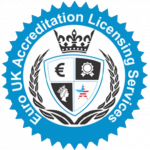Tucson is a growing city in the USA with a strong local business community. With a population of over 540,000 and an increasing number of small businesses. Competition for online visibility is high in Tucson. To stand out, businesses must implement strong SEO strategies that help them rank higher in local search results.
This guide covers the most effective SEO strategies tailored for small businesses in Tucson.
1. Optimize Your Google My Business (GMB) Profile
Google My Business (GMB) is one of the most important tools for local SEO in Tucson. Nearly 46% of all Google searches have local intent, meaning potential customers are actively looking for businesses near them. A well-optimized GMB profile increases visibility in search results and Google Maps.
Steps to Optimize Your GMB Profile
- Claim and verify your business on Google My Business.
- Ensure your business name, address, and phone number (NAP) are consistent across all platforms.
- Select the most relevant business categories.
- Add high-quality photos of your business, products, or services.
- Encourage customers to leave reviews, as businesses with higher ratings get more clicks.
- Post regular updates, offers, or events to keep your listing active.
2. Focus on Local Keywords
Using location-specific keywords helps businesses rank for searches relevant to their area. Customers searching for services in Tucson often include terms like “near me” or the city name in their queries.
How to Use Local Keywords Effectively
- Include keywords like SEO in Tucson, digital marketing Tucson, and best Tucson coffee shop in website content.
- Add keywords to meta titles, descriptions, and headers.
- Use natural language and avoid keyword stuffing.
- Create blog content about Tucson-specific topics to attract local traffic.
3. Build High-Quality Local Backlinks
Backlinks from reputable local websites help improve domain authority and search rankings. The more Tucson-based websites link to your business, the more trustworthy your site appears to Google.
Ways to Earn Local Backlinks
- Get featured in local directories like the Tucson Metro Chamber and Visit Tucson.
- Partner with local businesses and request backlinks.
- Sponsor or participate in local events to get mentioned on event pages.
- Write guest posts for Tucson-based blogs and news websites.
4. Optimize Website for Mobile and Speed
More than 60% of searches come from mobile devices, making mobile optimization a critical factor for SEO success. Google also considers website speed when ranking sites.
Steps to Improve Mobile Experience and Speed
- Use a responsive website design that fits screen sizes of all types of devices.
- Compress images and use caching to improve loading speed.
- Minimize pop-ups and intrusive ads.
- Test your website’s speed using Google’s PageSpeed Insights.
5. Create Location-Specific Content
Publishing content that focuses on Tucson-related topics helps attract local traffic. Businesses that provide valuable, localized content rank higher in search results.
Types of Local Content to Publish
- Blog posts about Tucson events, trends, or industry news.
- Case studies featuring local customers or success stories.
- Guides such as “Best Coffee Shops in Tucson” or “Top Real Estate Markets in Tucson.”
- Video content showcasing your business and local community involvement.
6. Leverage Social Media for Local Engagement
Social media platforms play a role in local SEO by increasing brand awareness and driving website traffic. Active engagement on social media helps businesses connect with their audience.
Social Media Strategies for Local SEO
- Post content relevant to Tucson, such as local news, events, or promotions.
- Engage with followers by responding to comments and messages.
- Use location tags in posts to attract local audiences.
- Share customer reviews and testimonials to build credibility.
7. Improve On-Page SEO
On-page SEO ensures that each website page is optimized for both users and search engines. A well-optimized page ranks higher and provides a better experience for visitors.
Essential On-Page SEO Elements
- Use relevant and keyword-rich title tags and meta descriptions for each targeted page.
- Structure content with proper heading tags (H1, H2, H3).
- Include internal links to guide visitors to other relevant pages on your site.
- Optimize images with descriptive alt text.
- Ensure your site is easy to navigate and user-friendly.
8. Monitor Performance and Make Data-Driven Decisions
Regularly tracking website performance helps businesses identify what’s working and where improvements are needed.
SEO Tools for Tracking Performance
- Google Analytics: This is free tool to tracks website traffic, user behavior, and conversions and other stuff.
- Google Search Console: Monitors search performance and detects technical issues.
- Moz and Ahrefs: Analyze backlinks and keyword rankings.
- BrightLocal: Provides local SEO insights and rankings.
Conclusion
Implementing these SEO strategies will help small businesses in Tucson improve their online visibility, attract local customers, and stay ahead of the competition. Consistency and ongoing optimization are key to long-term success in search rankings. Businesses that invest in SEO now will gain a significant advantage in Tucson’s competitive market.











